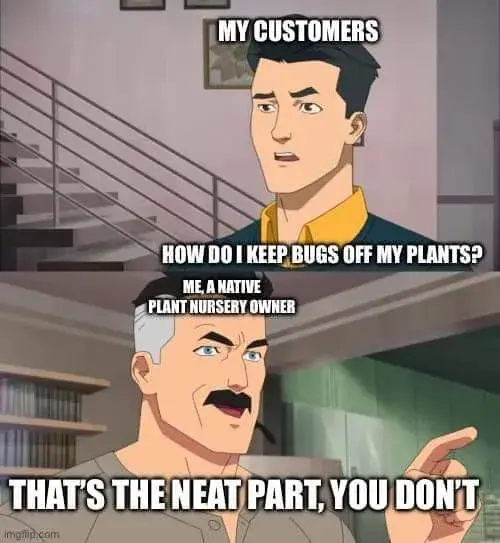Ahh yes, my poor Whitestar Calathea that gets a spider mite infestation every few months is definitely proof of this. Always the same one. Never anything else around it.
Nature and Gardening
All things green, outdoors, and nature-y. Whether it's animals in their natural habitat, hiking trails and mountains, or planting a little garden for yourself (and everything in between), you can talk about it here.
See also our Environment community, which is focused on weather, climate, climate change, and stuff like that.
(It's not mandatory, but we also encourage providing a description of your image(s) for accessibility purposes! See here for a more detailed explanation and advice on how best to do this.)
This community's icon was made by Aaron Schneider, under the CC-BY-NC-SA 4.0 license.
I think you're doing great things, making sure there's prey for lacewings and ladybugs!
My arachnophobia is always conflicted by this... 😅
I still get the shiver of worry around spiders, but I will say that for every spider I've witnessed I've seen hundreds of butterflies and moths. I understand and empathize with the concern though
The Japanese beetles though ☹️
It's okay to be a stand-in predator of insects that are listed invasives in your bioregion, with the caveat of "as long as you've correctly identified them". But planting native plants is a calling card for many insects that support many more species, some of which may be entirely dependent on the species you've planted.
Firefly larvae will prey on beetle grubs, and I learned recently that tachinid flies will parasitize Japanese beetles. There's also Bacillus thuringiensis that can be used to help mitigate pressure from these beetles and preserve the foliage for the local ecology that needs it.
yeah we have a native plant garden and it's great! and we have a good number of pollinator species in our backyard. The japanese beetles just make me angry. That's good to know about tachinid flies though, I'm pretty sure that's a large portion of the flies out in our yard.
The beetles don't attack our native plants thankfully, they only attack a single ornamental rose bush we have and our raspberry bush. They seem to love pink roses. And beetle traps work decently well, but of course it's not solving the root of the problem.
Yeah they love the heck out of Rosaceae members for sure. If you've got the flies around, keep an eye out for a white dot on the heads of the beetles - that's the sign that there is an egg which will hatch and parasitize them. The BT will go after them during their grub phase in the soil, which should make other control methods even more useful. A good rule of thumb for these live controls is to check for lot numbers and packaging dates, as less BT will survive the longer the package sits before use.
